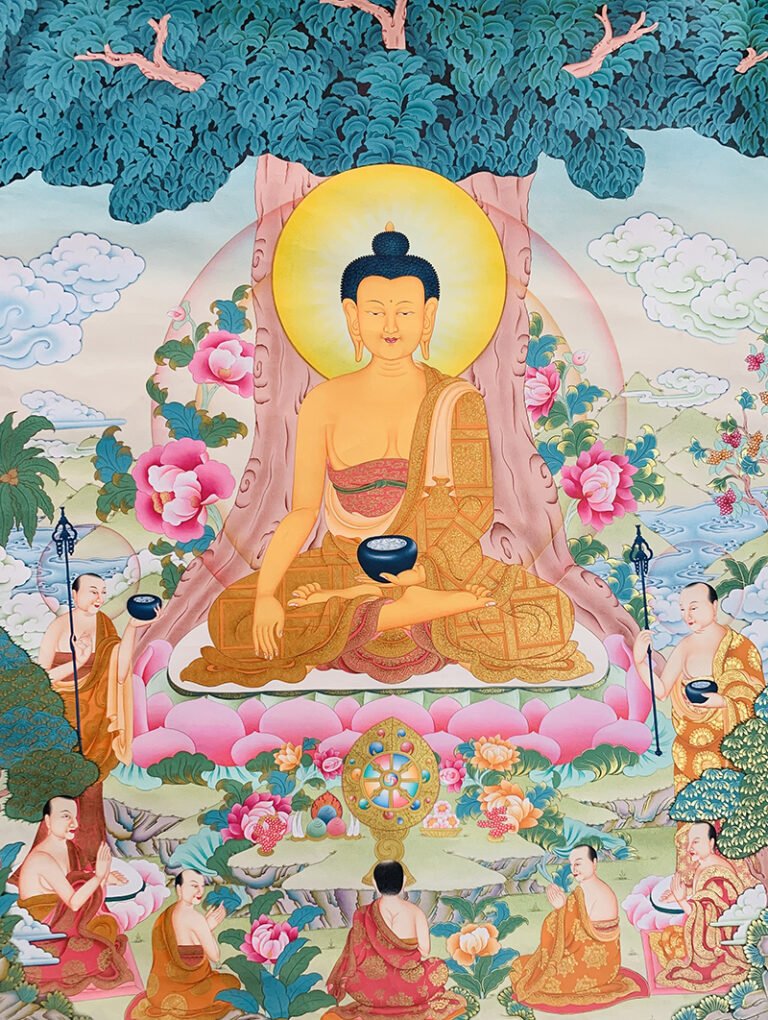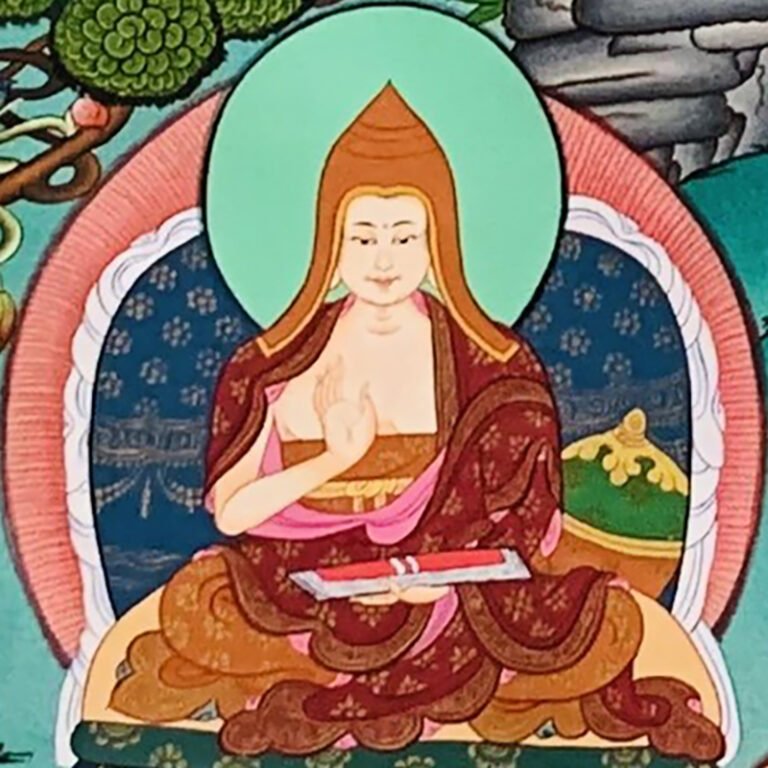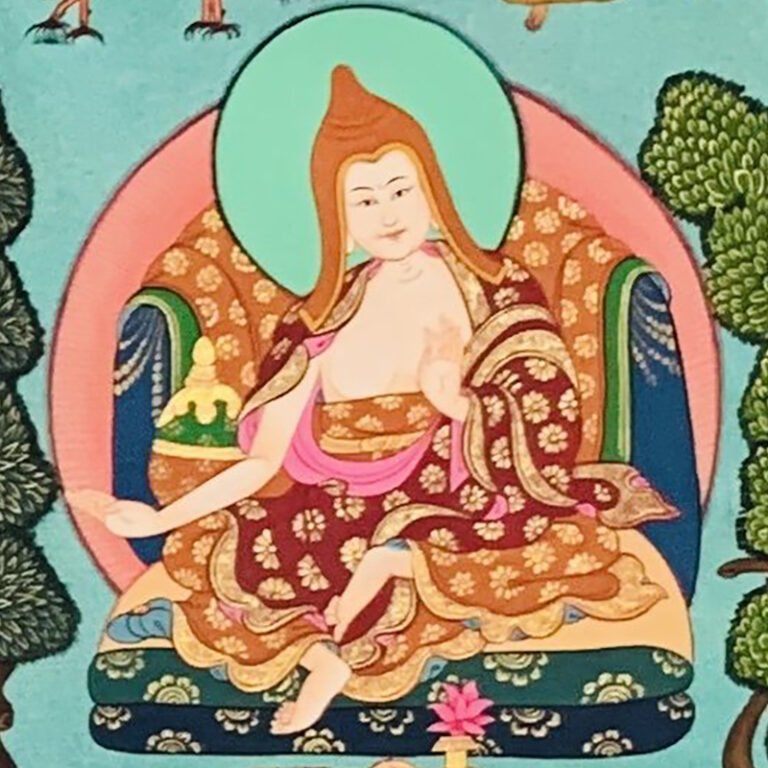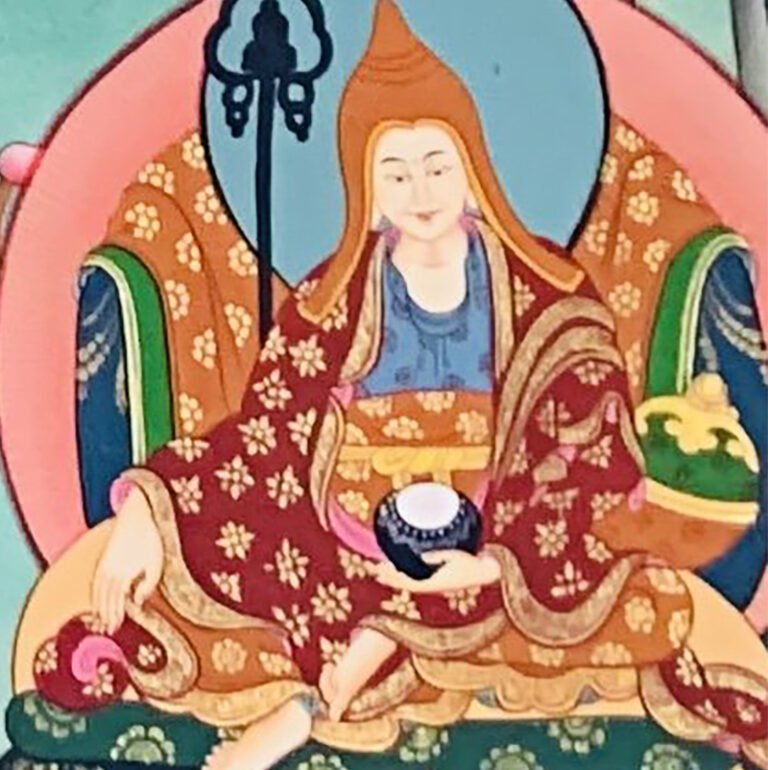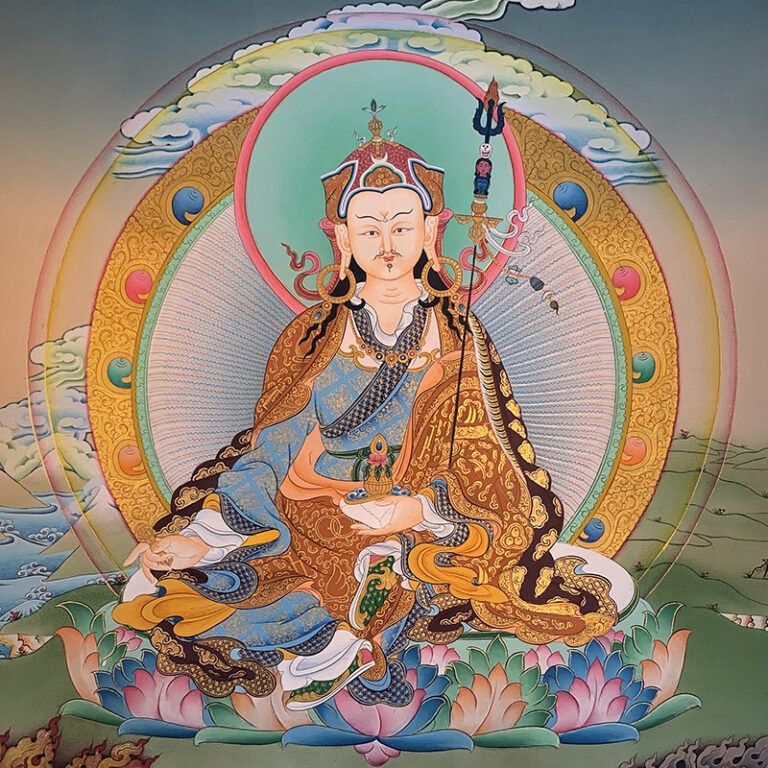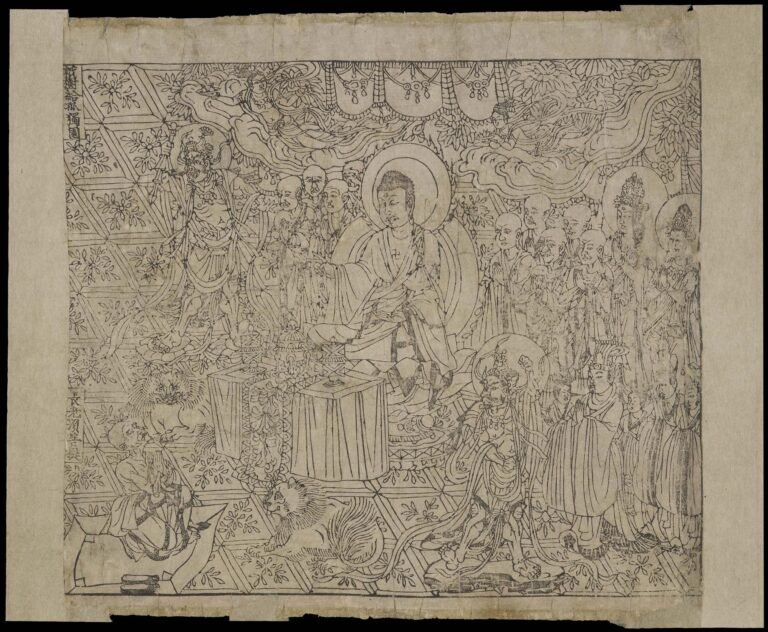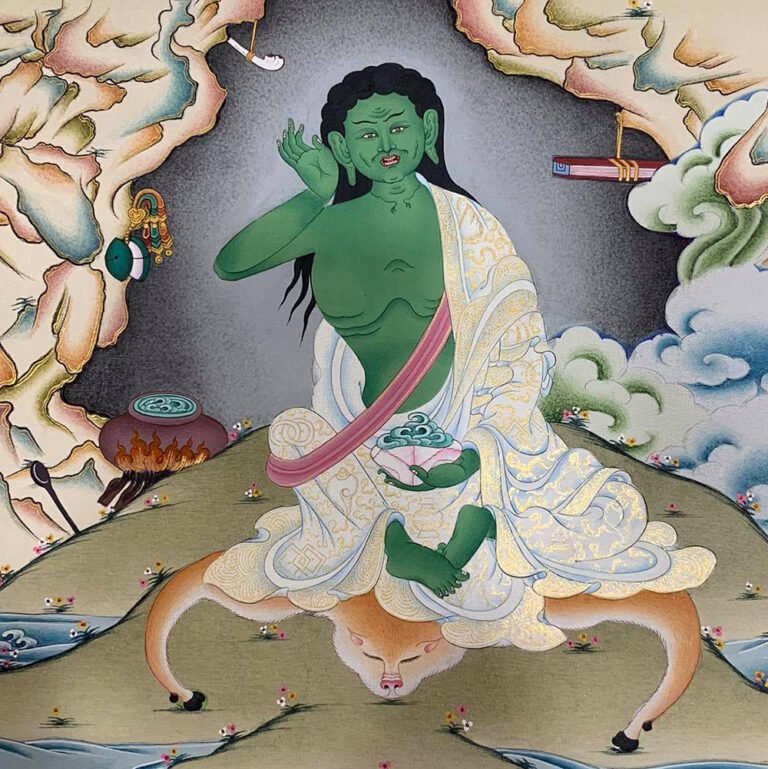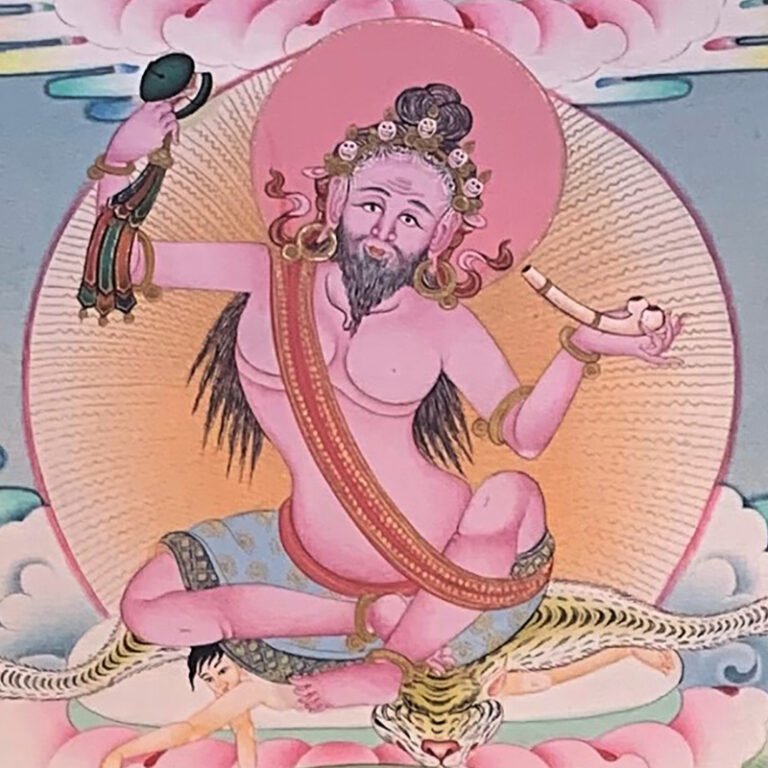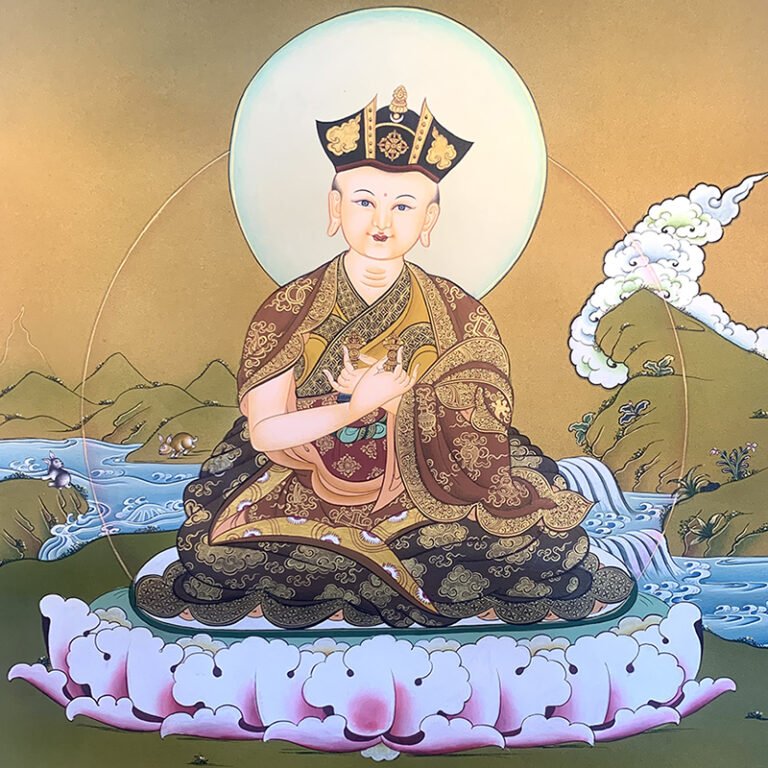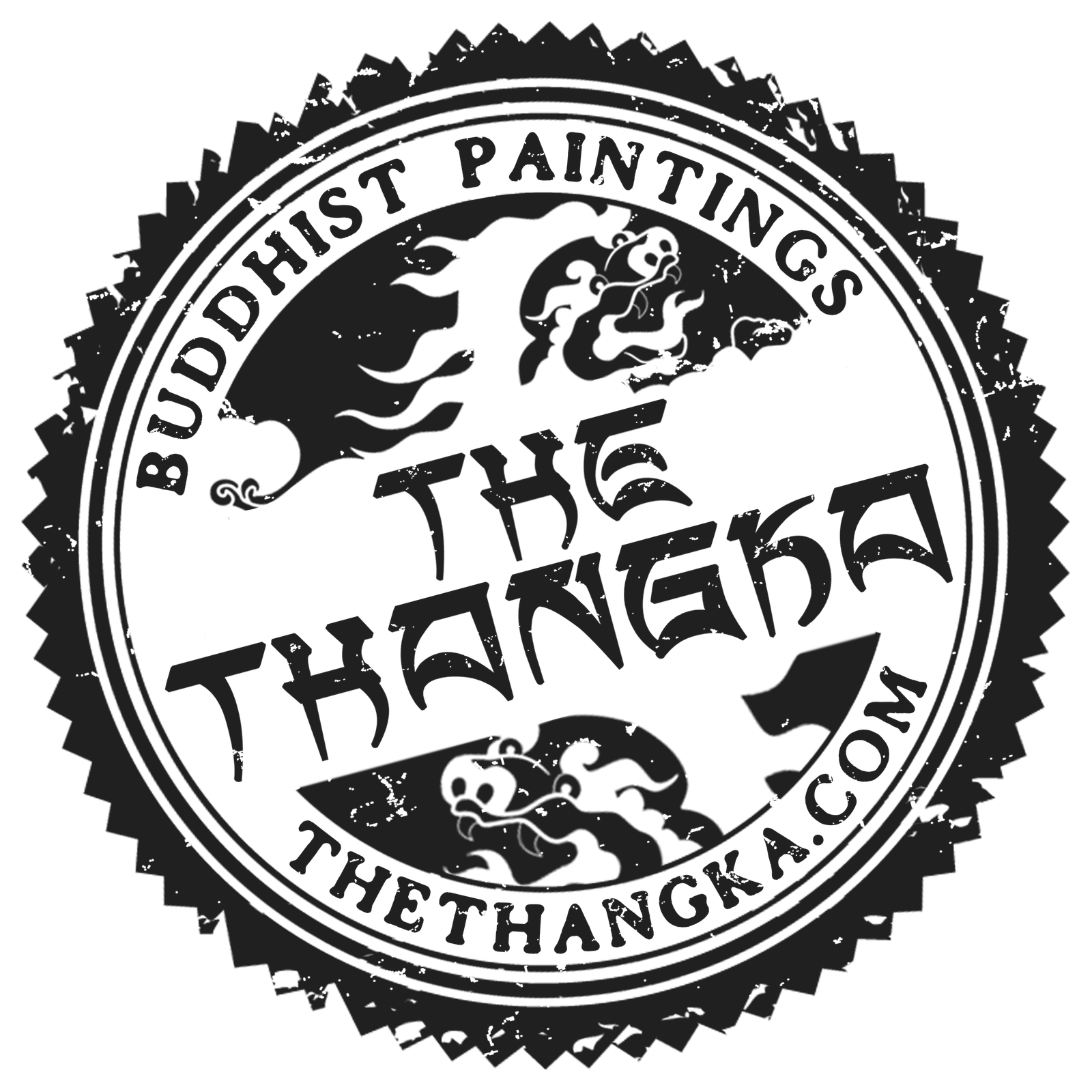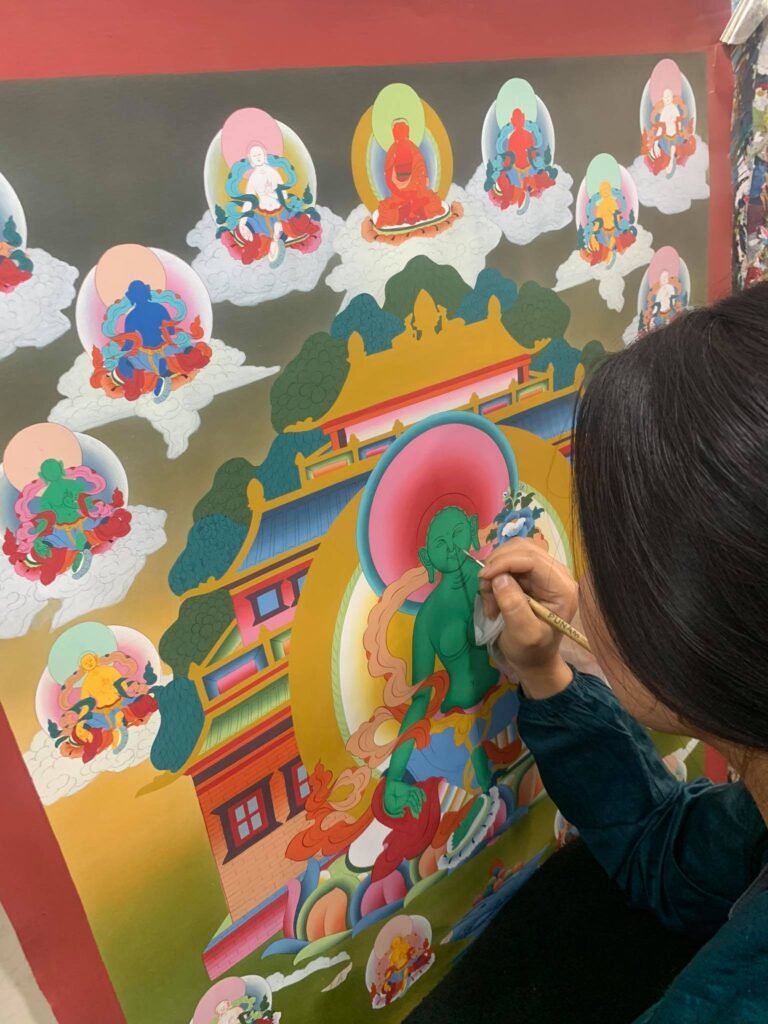Timeline
Important key events and influential Buddhist figures in the History of Tibet, India, And The Himalayan Region
The first Buddhist council held at Rajagriha, India with five hundred arhats དགྲ་བཅོམ་པ་ headed by Mahakashyapa འོད་སྲུང་ཆེན་པོ་. Mahakashyapa was one of the principles disciples of Buddha Shakyamuni སངས་རྒྱས་ཤཱཀྱ་ཐུབ་པ་ and the first who succeeded the Buddha as head of the Buddhist community. [1] [2]
At the second Buddhist Council, held 110 years after the Buddha's prinirvana, the first division of the Sangha དགེ་འདུན་ happened when the Sthaviras ('elderly members') divided from the majority Mahāsāṃghikas ('the Great Sangha'). [1] [2]
The Third Buddhist Council took place 137 or 160 years after the parinirvana of the Buddha. Five hundred arhats led by Arya Parsva and four hundred panditas led by Vasumitra དབྱིག་ཤེས་. [2]
Pali canon brought from northern India to Sri Lanka by Mahinda, a Buddhist monk who was the son of the emperor Asoka. The Mahavihara ('great monastery') was established by Mahinda himself. [1]
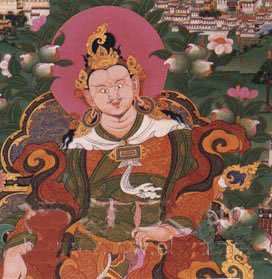
Post Nyatri Tsenpo is said to have been the first king of Tibet. [2] [11] [i8]
Pali texts were written down for the first time in Sri Lanka. Abhayagiri vihāra montsray estblished. [1]

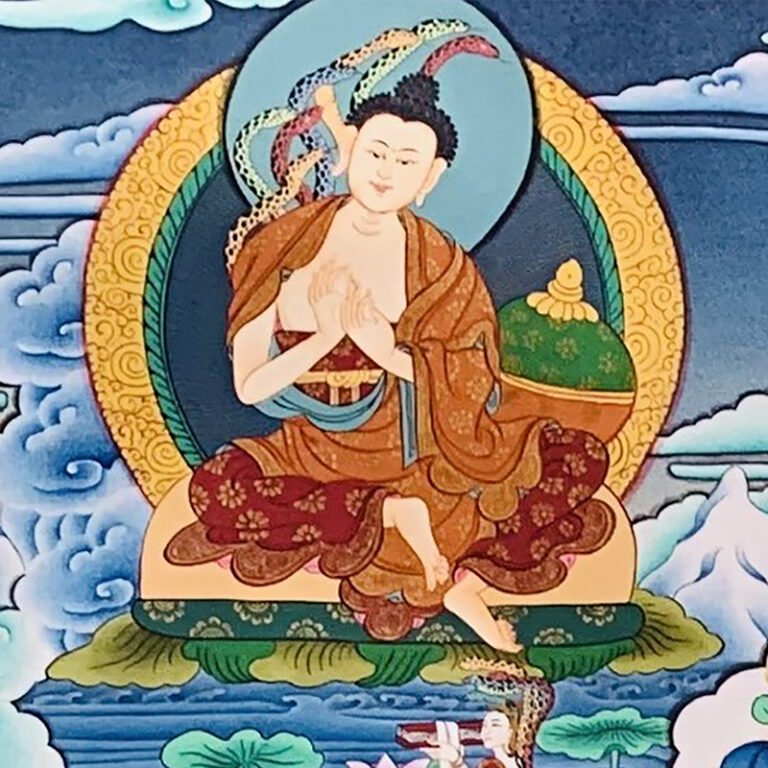
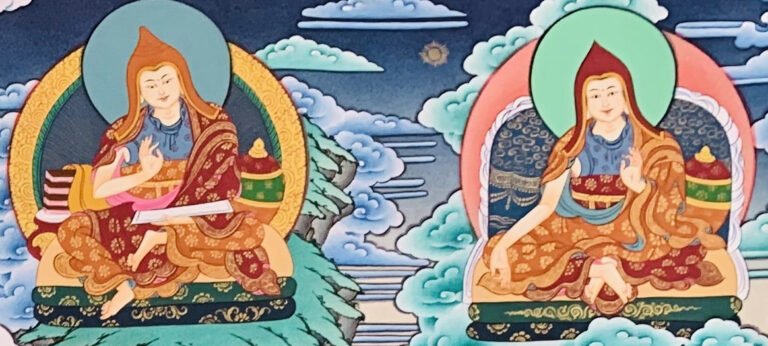
Figure Asanga (left image) and his elder half-brother Vasubandhu were the greatest Buddhist authorities of Ancient India. Asanga was founding father of the other great Sastra བསྟན་བཅོས། school of the Mahayana ("Great Vehicle"), namely the Yogacara རྣལ་འབྱོར་སྤྱོད་པ་ (or Chittamatra སེམས་ཙམ་པ་, "Mind Only"). Asanga received teachings from Maitreya བྱམས་པ་ and transcribed them as the ‘Five Treatises of Maitreya’ བྱམས་ཆོས་སྡེ་ལྔ་. [2] [3]

Figure Chandrakirti was a renowned Indian scholar. He was the author of Introduction to the Middle Way དབུ་མ་ལ་འཇུག་པ་, Clear Words ཚིག་གསལ་ and other key works on the Middle Way. [2] [7]

Video Hsüan-tsang (also written Xuanzang) was a Buddhist monk and Chinese pilgrim to India who translated the sacred scriptures of Buddhism from Sanskrit into Chinese and founded in China the Buddhist Consciousness Only school. His fame rests mainly on the volume and diversity of his translations of the Buddhist sutras and on the record of his travels in Central Asia and India, primarily to Nalanda university. [14] [i7]
King Songtsen Gampo སྲོང་བཙན་སྒམ་པོ , is known as the 1st Dharma king. His two wives, Princess Bhrikuti from Nepal and Princess Wencheng from China, introduced both Indian and Chinese forms of Buddhism for the first time in Tibet. [1] [2]

Thonmi Sambhota is the Tibetan grammarian credited with inventing the Tibetan alphabet and writing the most important treatises on Tibetan grammar. According to Tibetan tradition, King Songtsen Gampo sent a young man of the Thönmi clan to India in the year 632 with other youths, to learn the alphabet. The ancient annals of Tun-huang records the year 655 that 'the text of the laws was written'. [2] [4] [i4]
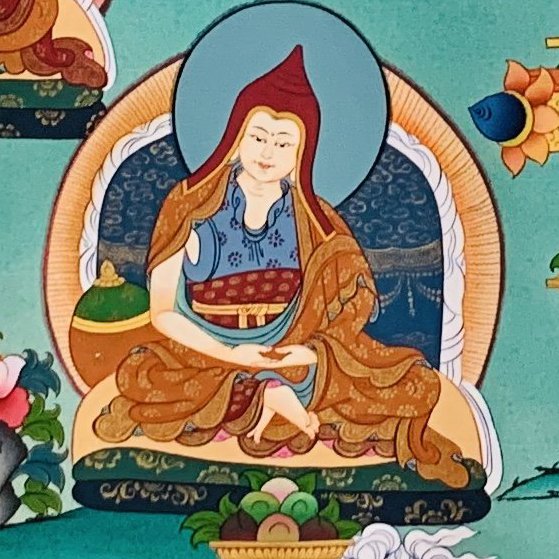
Figure Shantideva was a great Indian master, scholar, and bodhisattva བྱང་ཆུབ་སེམས་དཔའ་, who was the author of the Bodhicharyavatara བྱང་ཆུབ་སེམས་དཔའི་སྤྱོད་པ་ལ་འཇུག་པ་. He is also counted among the eighty-four mahasiddhas གྲུབ་ཐོབ་བརྒྱད་ཅུ་རྩ་བཞི་. [2] [12]

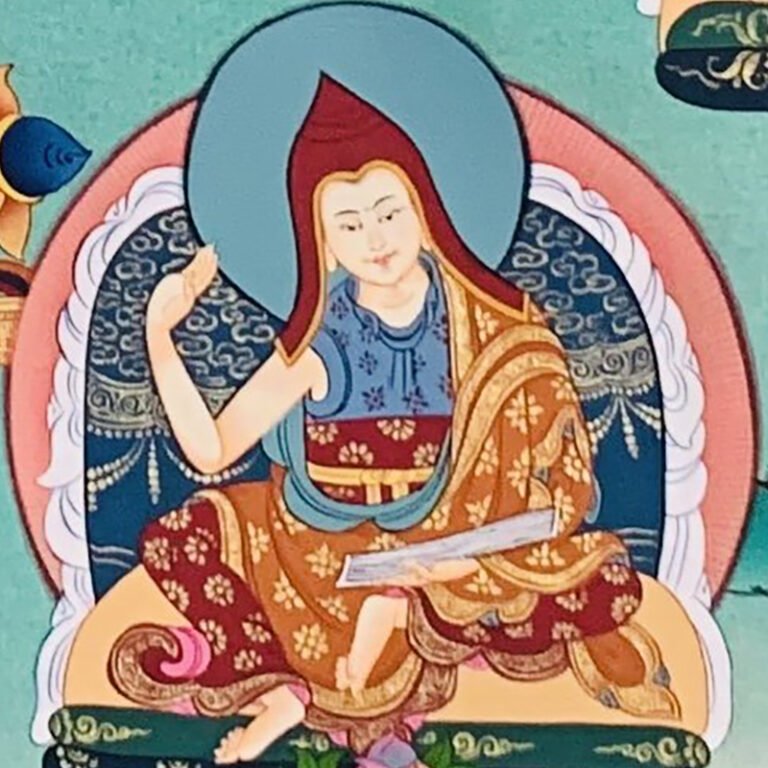
Figure Kamalashila was an Indian master and professor of Nalanda University. He was the main disciple of Shantarakshita ཞི་བ་འཚོ་. He is known for winning the Samya debate. [2]

A famous debate at Samye བསམ་ཡས་ or Lhasa in between an Indian faction, headed by Kamalaśīla པདྨའི་ངང་ཚུལ་ and a Chinese faction, headed by the teacher Hvashang Mahayana. The Indian opinion supporting gradual awakening is said to have prevailed. [1]

King Tri Ralpachen is known as the 3rd Dharma king and one of King Trisong Detsen's grandsons. He ruled Tibet from 815 until 838, when he was assassinated. He was extremely devoted to the teachings of the Buddha and is famous for having built one thousand temples. [2]
Langdarma Udumtsen was the last king of the Tibetan empire. His time is known as a dark age for Buddhism in Tibet. "Langdarma suppressed the Buddhist faith and in his time Buddhism received a severe setback" said HH the Dalai Lama. The king was assassinated by Lhalung Palgyi Dorje ལྷ་ལུང་དཔལ་གྱི་རྡོ་རྗེ། in 842. [2] [7] [10]

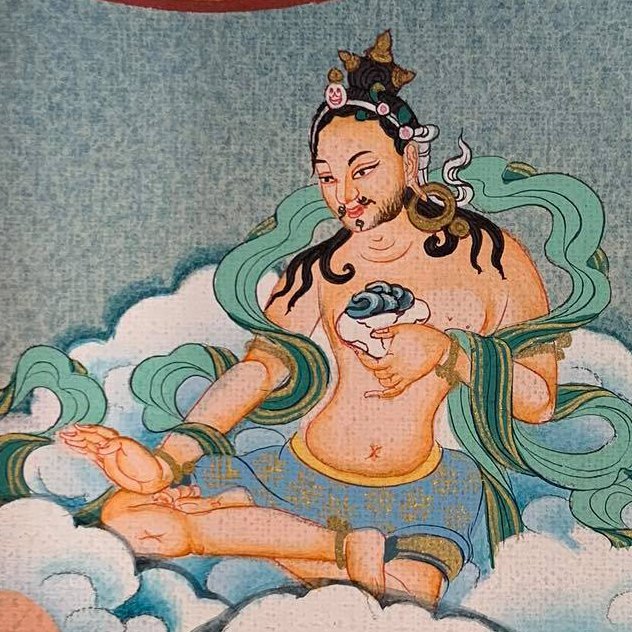

Figure Atisha Dipamkara Shrijñana ཨ་ཏི་ཤ་མར་མེ་མཛད་དཔལ་ཡེ་ཤེས་ (or Jowo Jé Palden Atisha ཇོ་བོ་རྗེ་དཔལ་ལྡན་ཨ་ཏི་ཤ་) was a great Indian master and scholar, and author of many texts including the Lamp for the Path of Awakening བྱང་ཆུབ་ལམ་སྒྲོན. He spent the last ten years of his life in Tibet, teaching and translating texts, and was instrumental in reinvigorating Buddhism there after a period of persecution. His disciples founded the Kadampa བཀའ་གདམས་པ་ school. [2]

Figure Indian Buddhist teacher who studied at both Nalanda ནཱ་ལེནྡྲ། and Vikramashila རྣམ་གནོན་ཚུལ། Monasteries. Maitripa is famous for brining his lineage Tibet by teaching the Mahamudra philosophy and practice to Marpa Lotsawa མར་པ་ལོ་ཙཱ་བ། [2] [16]

The Kagyu བཀའ་བརྒྱུད tradition pawned various sub-schools. The Karma Kagyu ཀརྨ་བཀའ་བརྒྱུད sub-school is headed by a teacher given the title Karmapa ཀརྨ་པ. The first of these, a disciple of Gampopa, was Düsum Khyenpa. [1]
The Sakyapas recoginzed five 'great masters', the most important of which is usually regarded as Sakya Paṇḍita. [1]
Dolpopa Sherab Gyaltsen is often credited with founding the Jonang ཇོ་ནང tradition of Tibetan Buddhism. He was a great exponent of the Shentong གཞན་སྟོང་ view. [2]
The Tibetan author with the largest volume of work. Bodong Chogle Namgyel was one of Tibet's most learned and realized masters as well as a most prolific writer. His collected works are in 137 volumes. [7] [8]
Gorampa Sonam Senge is one of the most widely-studied philosophers in the Sakya ས་སྐྱ་ school. He was fierce critic of Je Tsongkhapa རྗེ་ཙོང་ཁ་པ་བློ་བཟང་གྲགས་པ།. Gorampa's works were so controversial that they were suppressed by Gelug དགེ་ལུགས་ leaders shortly after they were composed. Gorampa’s texts remained hidden until the early 20th century. [3] [7]
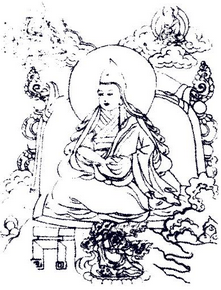
Sonam Gyatso was the first to be named Dalai Lama. The title goes back to the sixteenth century and to Gelug དགེ་ལུགས་ relations with the Mongols, whose ruler, Altan Khan, declared Sonam Gyatso, the third in a line of reincarnating Gelugs lamas, 'an ocean (Mongolian dalai) [of wisdom]'. Sonam Gyatso was thus subsequently regarded as the third Dalai Lama. [1] [i5]
The 5th Dalai Lama. Since his time the Dalai Lama has acted as Tibetan head of state. [1]

The Potala Place, the main palace and residence of the Dalai Lamas, constructed in Lhasa by Ngawang Lobsang Gyatso ངག་དབང་བློ་བཟང་རྒྱ་མཚོ་, the Fifth Dalai Lama. Its construction started in 1645 on a large hill upon the ruins of an old palace and hermitage, erected on 637 by King Songtsen Gampo སྲོང་བཙན་སྒམ་པོ . Up until the Chinese invasion, it also housed Tibet's central administration and the Namgyal རྣམ་རྒྱལ། Monastery. [2] [6]
Jigme Lingpa is regarded as one of the most important figures in the Nyingma རྙིང་མ lineage. He was a great scholar and visionary, and discovered the Longchen Nyingtik ཀློང་ཆེན་སྙིང་ཐིག cycle through a series of visions of the great fourteenth-century master, Longchenpa ཀློང་ཆེན་པ།. [15]
Chokgyur Dechen Shikpo Lingpa མཆོག་གྱུར་བདེ་ཆེན་ཞིག་པོ་གླིང་པ་ was one of the great tertöns གཏེར་སྟོན་ (terma revealer) and an emanation of Prince Murub Tsenpo. His terma revelations are the Chokling Tersar མཆོག་གླིང་གཏེར་གསར་ (New Treasures of Chokgyur Lingpa). [2]
Ju Mipham Rinpoche was a great Nyingma master and writer and one of the greatest scholars of his time. He is known to have shaped the trajectory of the Nyingma རྙིང་མ school. Longchenpa ཀློང་ཆེན་པ་ was the single most influential Tibetan figure for Mipham Rinpoche. He was a known supporter of the Rimé རིས་མེད་ (non-sectarian) movement. [2] [7]
Sources
[1] Rupert Gethin, The Foundations of Buddhism, Oxford Paperbacks; 1st edition (July 1 1998). p. 14, 40-42, 57, 254, 266-267, 270-273.
[2] rigpawiki.org – Rigpa Shedra Wiki,. an online encyclopedia of Tibetan Buddhism.
[3] plato.stanford.edu – The Stanford Encyclopedia of Philosophy.
[4] R. A. Stein, Tibetan Civilization. (1972), Stanford University Press. p. 51, 58.
[5] kagyuoffice.org – Office of the 17th Karmapa. Naropa, Tilopa, Marpa, Milarepa.
[6] Michael Dillon, China: A Cultural and Historical Dictionary, Routledge (1998). p. 184.
[7] Douglas S. Duckworth, Jamgon Mipam: His Life and Teachings. Shambhala Publications (2011), intro, p. 20, 25-26, 33, 40, 43, 55.
[8] Rangjung Yeshe Wiki – Rangjung Yeshe Institute. Institution of higher learning for Buddhist philosophy and practice.
[9] The British Museum – The British Museum in London, England, is a public institution dedicated to human history, art and culture.
[10] dalailama.com – Office of His Holiness the 14th Dalai Lama.
[11] Erik Haarh, Extract from “The Yarlung Dynasty“, in: The History of Tibet, ed. Alex McKay, Vol. 1, London (2003).
[12] Shantideva, The Way of the Bodhisattva (Bodhicaryavatara), Translated by The Padmakara Translation Group, Shambhala Publications (1997).
[13] ancient.eu – World History Encyclopedia is a non-profit organization.
[14] Encyclopedia Britannica, The Editors of Encyclopaedia – Xuanzang.
[15] Longchen Nyingtik Project – A project to translate the Core Texts of the Longchen Nyingtik.
[16] Himalayan Art Resources – Artworks from Tibet, Nepal, Bhutan, India, China and Mongolia
Images
[i1] All images that are not attributed are from TheThangka.com and Rinchen Ling Art School in Boudhanath, Kathmandu, Nepal.
[i2] Adobe Stock.
[i3] Photo Dharma from Sadao, Thailand, CC BY 2.0, via Wikimedia Commons.
[i4] Sahil Bhopal, Tashi Mannox, CC BY-SA 4.0, via Wikimedia Commons.
[i5] Gombojab Tsybikov, Public domain, via Wikimedia Commons.
[i6] Moszczynski, Public domain, via Wikimedia Commons.
[i7] Eugene a, Public domain, via Wikimedia Commons.
[i8] Unknown author, Public domain, via Wikimedia Commons.
View all Links & Sources
